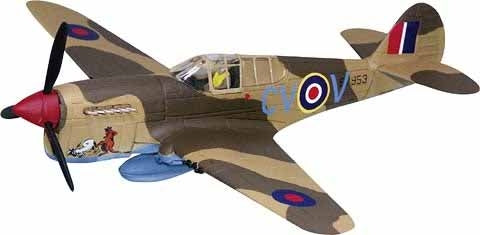Corgi US35207 Curtiss P-40E Warhawk, RAAF No.3 Sqn, Robert Gibbes, North Africa, 1943
Corgi US35207 Curtiss P-40E Warhawk, RAAF No.3 Sqn, Robert Gibbes, North Africa, 1943
Corgi
Couldn't load pickup availability
Curtiss P-40E Warhawk, RAAF No.3 Sqn, Robert Gibbes, North Africa, 1943
During World War II, Bobby Gibbes became one of Australia's leading aces. He rose from pilot officer to commanding No.3 Squadron, RAAF, flying 274 sorties and scoring ten and two shared victories during almost two years of service in North Africa. He flew a Curtiss P-40E Warhawk, marked with his personal letter "V", while CO of the unit, claiming a Bf109 destroyed and a second damaged with it. Later on, he served with Nos. 250 and 5 Squadrons, but unfortunately, his P-40E Warhawk with the same plate number as before, was written off while still with the latter unit when it stalled on takeoff after its pilot tried to avoid a gun post at Neffatia on March 2, 1943.
During the war, young airmen who were separated from home, family, loved ones, and a familiar way of life often found ways of escaping the harsh reality of war by personalising their aircraft with what has become known as nose art. A touch of light relief to their deadly day-to-day existence was brought by humour, slogans, nicknames, cartoons, girls, and all. The Corgi Nose Art range aims to capture some of the superb works of art that adorned aircraft on all sides of the conflict. Each model includes a diecast body panel featuring the art in colourful, large-scale detail.
The P-40 Warhawk was designed to meet a USAAC requirement for a pursuit aircraft. It was first flown on October 14th, 1938. This aircraft was tough, virtually trouble-free, and saw continual improvements to arms, armor, and engines. The P-40 served in numerous combat areas, often outclassed by its adversaries in speed, maneuverability, and rate of climb. However, it earned a reputation for extreme ruggedness. Its strong construction, heavy firepower, and ability to dive enabled it to compete with enemy fighters, and it was a formidable ground-attack aircraft. P-40s were also flown by the famed Flying Tigers against the Japanese in China.




